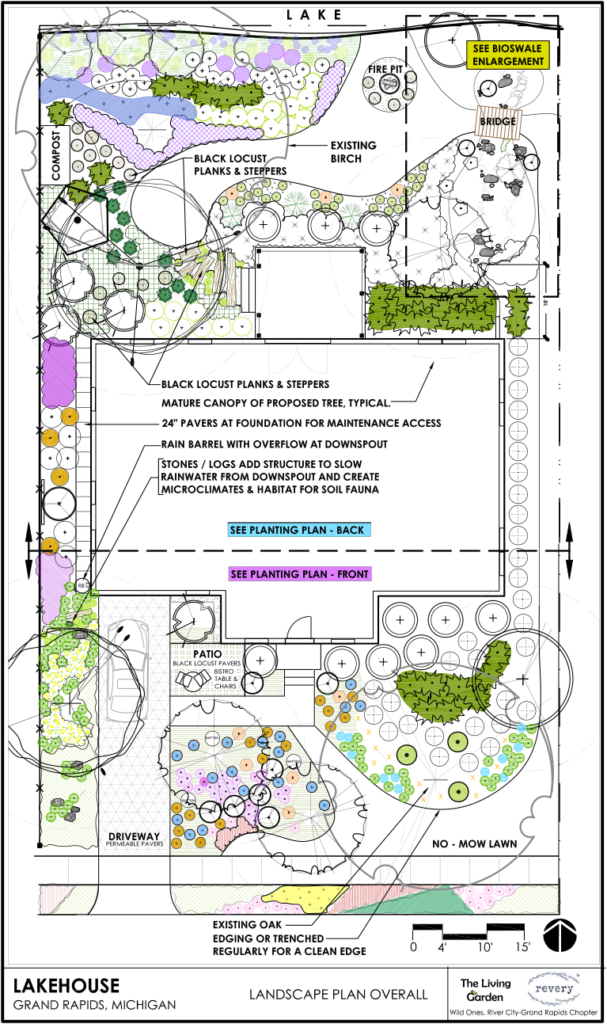
Printing note: This design was created to be 8.5″ x 14″ and the design pdf will print best on legal size paper.
Wild Ones Meet the Designers Webinar
Grand Rapids Discussion with Designers Amy Heilman & Rebecca Marquardt
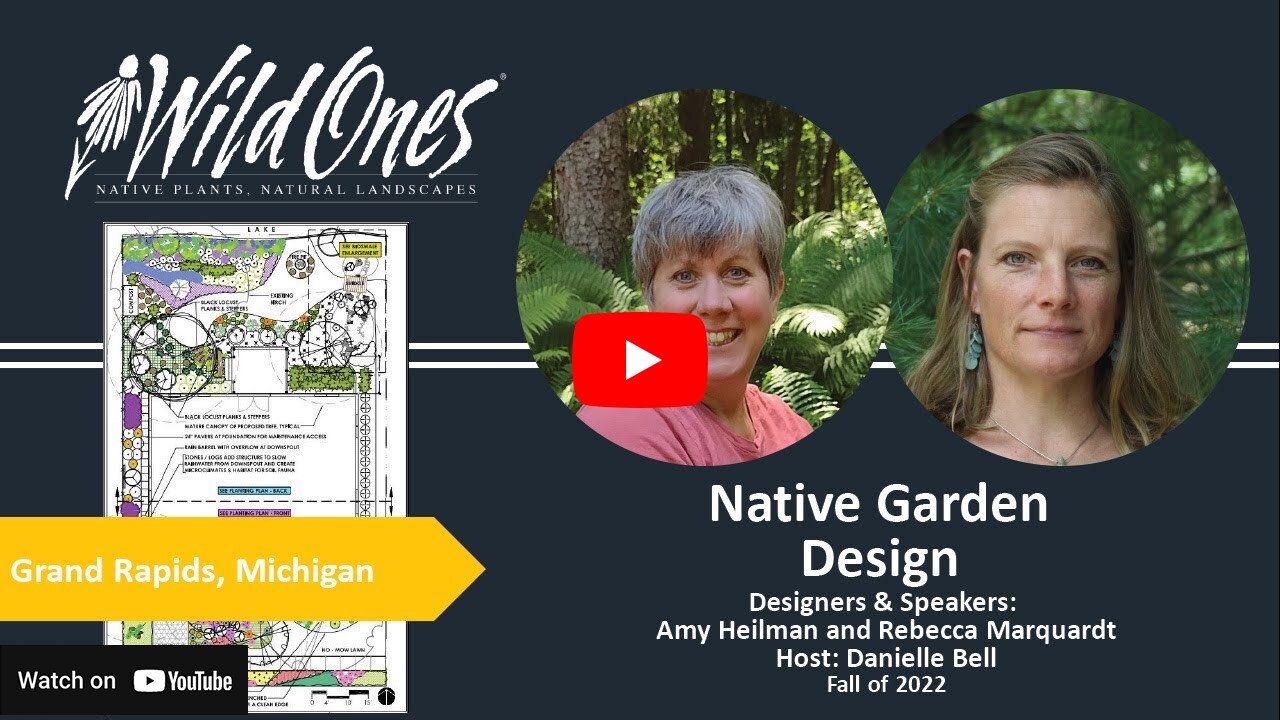
Overview
The Great Lakes of the United States hold 20% of the fresh water found on planet earth. The entire state of Michigan includes watersheds for four of the five Great Lakes (Erie, Huron, Michigan and Superior). See graphic from the Nature Conservancy below.
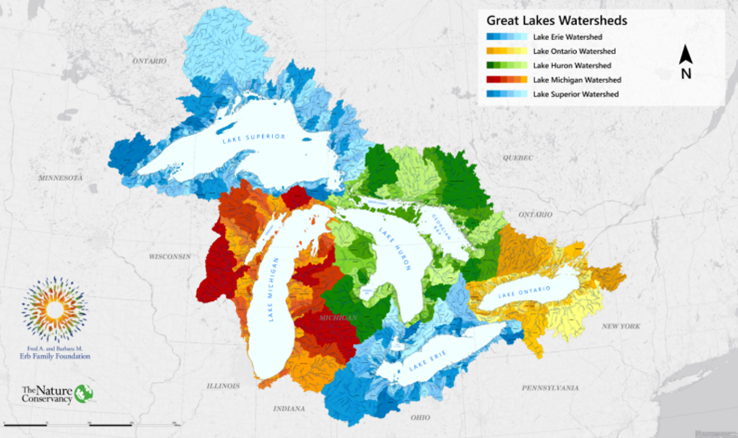
The thousands of inland lakes that exist within Michigan’s borders are valued for fishing, recreation, and habitat for wildlife. Housing development surrounding many lakes continues to grow at a steady pace, creating issues with flooding, erosion, sedimentation, the spread of invasive species and fragmentation of habitat.
Climate change is projected to lead to a 5-fold increase in heat wave days by 2050 and widespread drought is expected to triple during the summers and fall months. Inland lake temperatures may warm by 3-7 degrees. Increased temperatures allow warm air to capture more moisture, which means winters and springs will bring heavier snows and rains leading to widespread flooding. These are dire predictions but there are steps that can be taken by property owners to mitigate some of these issues.
Designer Statement
The designers envisioned this home site to be situated on land that slopes down to the south side of an inland lake. Soil types around the property range from clay to sandy loam to peaty, wet soil along the shoreline. Some areas are dry and quickly draining while other areas retain water at times. The home is part of a development along a paved street. The potential for erosion along the lake’s shore is high due to runoff. Heat pockets from hard surfaces along the street side create very dry growing conditions. Anticipated watering restrictions warrant wise plant selection. This landscape plan depicts some solutions to these common problems which will intensify with climate change.
Key elements of this design aiding in the adaption to climate change problems include:
- Minimizing high water-use turf, which is limited to use as a pathway to access other areas, and using drought-tolerant lawn alternatives.
- Increasing the amount of shade by planting broadleaf trees to help cool the south and west sides of the home in warm months and allow sunlight to access the home for radiant heat during cold months. Trees also capture carbon dioxide and release oxygen, thus cleaning the air. Their leaves are collected on-site, composted, and used as mulch (leaf mold) around plants to retain moisture and cool soil.
- Improving the ecological function of the soil not only will increase the overall health of the landscape and its ability to offer habitat to wildlife but will also enable more carbon to be sequestered.
- Transitioning the hot, dry parkway between sidewalk and street to low-scale, drought-tolerant plantings that provide nectar, pollen, and visual interest.
- Retaining and filtering rainwater on the property (rather than having it flow to local drains or into the lake) by directing downspouts to a garden bed along the driveway or a rain garden and bioswale that leads to the lake, allowing runoff to be captured and absorbed into surrounding plantings. Rain barrels also hold water that can be used in the garden.
- Preventing shoreline erosion during times of flooding or ice damage with a planted buffer that offers habitat rather than an impermeable concrete seawall. Plantings along the shore also filter pollutants entering the lake and help cool water temperatures, decreasing the chance of algae blooms.
- Using permeable materials for the patio, fire pit area, or driveway will allow water to filter through and remain on the property.
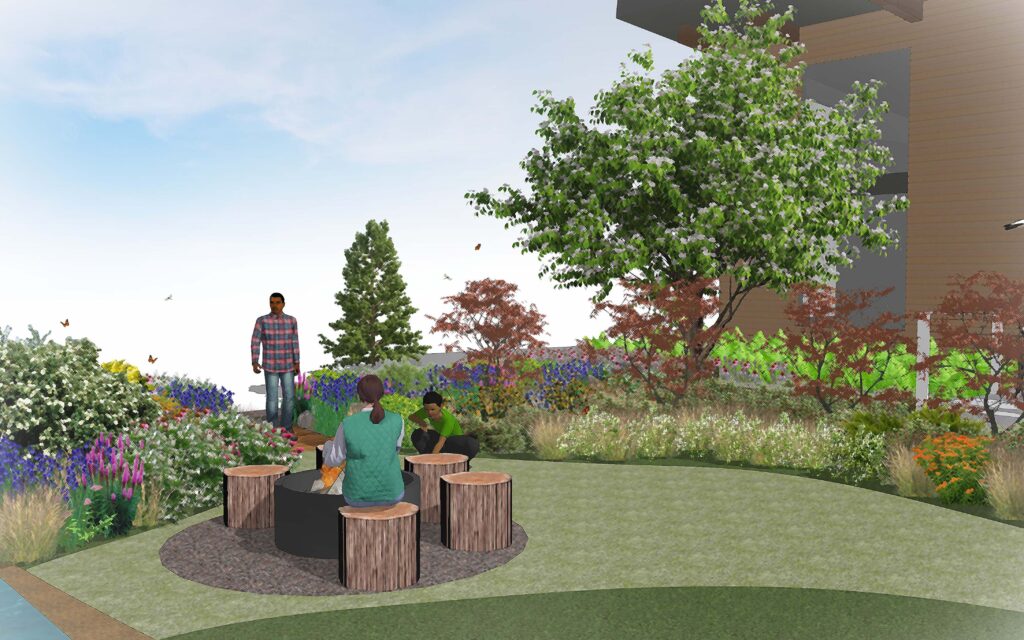
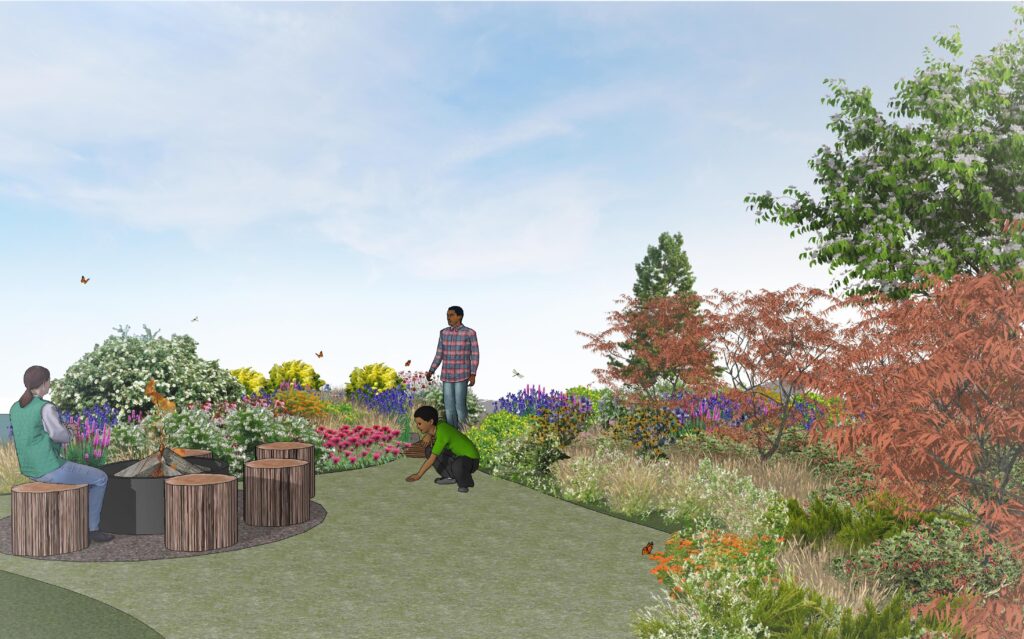
Plant Community Layout
This plan considered the existing soil types, hydrology, degrees of sun/shade occurring around the property and utilized plant species that are often found together in natural plant communities that exist under similar conditions around the Great Lakes region.
Dry Prairie – The front of the property has southern and western exposure and is adjacent to the pavement and the walls of the home. These elements reflect heat and increase soil temperature and dryness. A variety of sedges and grasses create a dense ground cover to help cool the soil and decrease weed competition. A combination of perennials, shrubs and trees that have low moisture requirements and tolerance to heat were used.
Wet/Mesic – Soil conditions along the north side of the home are a combinations of sandy loam and clay loam. More trees were added here to offer structure, habitat, and winter interest. The viburnums help screen the composting area from view. Clay pockets within the bioswale hold water as it travels from the downspout. Sedges were used in the lowest portions of the bioswale to slow the flow of water and aid in absorption. A diversity of colorful forbs will provide nectar, pollen, seeds and cover for insects and birds.
Wet Meadow – The lake’s shoreline is comprised of sand, silty loams, and peaty muck. Dominant plant species are sedges and tall, moisture loving forbs that can withstand the fluctuating water levels. This network of plants requires little maintenance beyond removal of occasional woody species that may arrive. Vegetation is left in place from year to year, allowing for buildup of organic material which works as an absorbent sponge and protective barrier to erosion.
Phasing
- Prioritize phases based on the most problematic areas first. In this example, the shoreline was eroding which meant loss of property to the elements. Stabilize the shore edge by laying a biodegradable erosion control blanket into which plugs of appropriate species are inserted. This blanket allows the plants to root and not get washed away by water action. The plants chosen, mostly a variety of sedges with mat-like root systems which soak up water, combined with colorful wildflowers with staggered bloom times, are species that can tolerate various levels of water inundation.
- Planting trees (8’- 10’ or larger) is also a good first step in combatting climate change. This is an investment in the property’s capability to offer needed shade – which saves money on cooling and heating. Trees store carbon and reduce stormwater runoff, increase property values, and provide habitat. Planting a diversity of fast-growing native trees appropriate for your site conditions is an action that reaps big rewards.
- Decrease lawn areas in stages by implementing small portions of the plan as time and budget allow. Lawn can be covered with cardboard and woodchips, bark mulch or shredded leaves collected from the property in the late fall to eradicate the grass and will be ready for planting in the spring. Focusing on completing one portion of the plan at a time before moving on to the next section provides a greater sense of satisfaction. Installing plants closely allows them to grow together more quickly, eliminating spaces for weeds and invasive species to become established.
- Retain the water that falls on the property by extending downspouts at least 10’ away from the home and into planted beds with appropriate species that can tolerate occasional high water levels as well as extended dry periods. The addition of rain barrels will help to store water so it can be used to water container plants, or the barrels may have a hose connected to them which runs into planted areas and water can be released as needed.
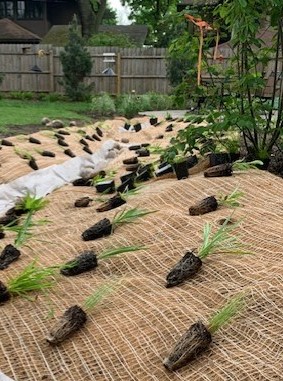
PLANT LIST

Alternate Leave Dogwood(Cornus alternifolia)
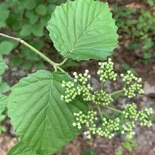
Arrowwood Viburnum(Viburnum dentatum)
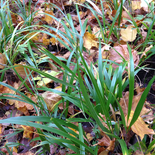
Beak Grass(Diarrhena americana)
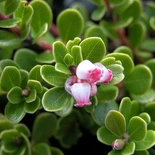
Bearberry(Arctostaphylos uva-ursi)
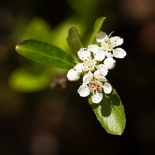
Black Chokeberry(Aronia melanocarpa)
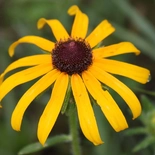
Black Eyed Susan(Rudbeckia hirta)
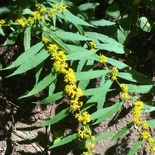
Blue-Stemmed Goldenrod(Solidago caesia)

Bottle Gentian(Gentiana andrewsii)

Bush Honeysuckle(Diervilla lonicera)
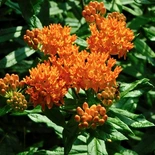
Butterfly Weed(Asclepias tuberosa)
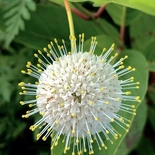
Buttonbush(Cephalanthus occidentalis)
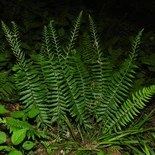
Christmas Fern(Polystichum acrostichoides)
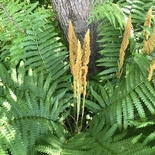
Cinnamon Fern(Osmunda cinnamomea)
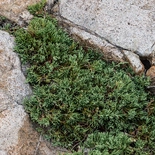
Creeping Juniper(Juniperus horizontalis)
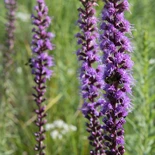
Dense Blazing Star(Liatris spicata)
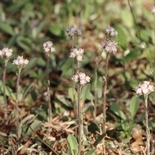
Field Pussytoes(Antennaria neglecta)
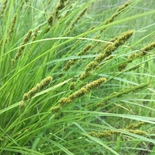
Fox Sedge(Carex vulpinoidea)

Fragrant Sumac(Rhus aromatica)

Golden Alexanders(Zizia aurea)

Indian Grass(Sorghastrum nutans)
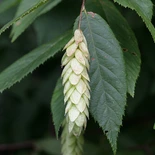
Ironwood(Ostrya virginiana)
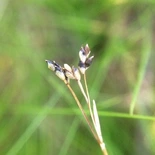
Ivory Sedge(Carex eburnea)
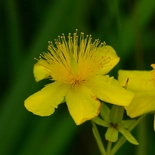
Kalm's St. John's Wort(Hypericum kalmianum)
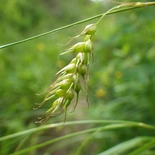
Long Beaked Sedge(Carex sprengelii)
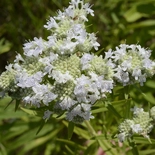
Mountain Mint(Pycnanthemum virginianum)

Musclewood(Carpinus caroliniana)
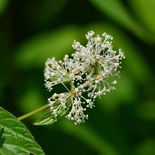
New Jersey Tea(Ceanothus americanus)
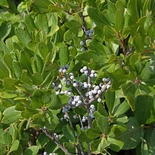
Northern Bayberry(Myrica pensylvanica)
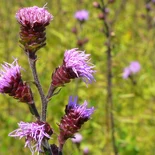
Northern Blazing Star(Liatris scariosa)
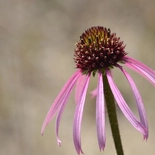
Pale Purple Coneflower(Echinacea pallida)
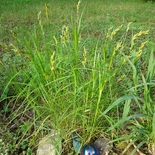
Palm Sedge(Carex muskingumensis)
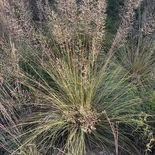
Prairie Dropseed(Sporobolus heterolepis)

Prairie Phlox(Phlox pilosa)
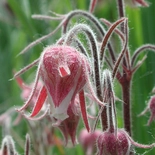
Prairie Smoke(Geum triflorum)
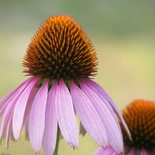
Purple Coneflower(Echinacea purpurea)
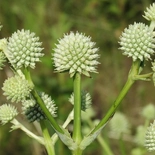
Rattlesnake Master(Eryngium yuccifolium)
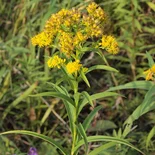
Riddell's Goldenrod(Solidago riddellii)
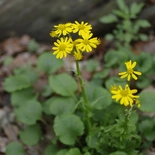
Round Leaved Ragwort(Packera obovata)

Saskatoon Serviceberry(Amelanchier alnifolia)

Sky Blue Aster(Symphyotrichum oolentangiense)
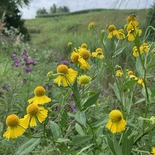
Sneezeweed(Helenium autumnale)
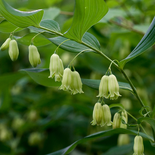
Solomon's Seal(Polygonatum biflorum)
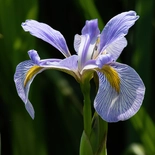
Southern Blue Flag Iris(Iris virginica)
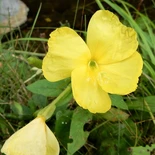
Sundrops(Oenothera fruticosa)

Swamp Milkweed(Asclepias incarnata)

Sweet Black-eyed Susan(Rudbeckia subtomentosa)
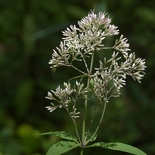
Sweet Joe Pye Weed(Eutrochium purpureum)
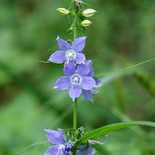
Tall Bellflower(Campanulastrum americana)
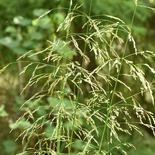
Tufted Hair Grass(Deschampsia cespitosa)
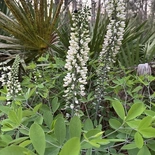
White False Indigo(Baptisia alba)

White Tinge Sedge(Carex albicans)
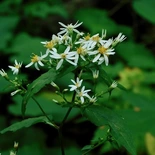
White Wood Aster(Eurybia divaricata)

Whorled Milkweed(Asclepias verticillata)

Wild Bergamot(Monarda fistulosa)

Wild Ginger(Asarum canadense)
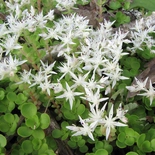
Wild Stonecrop(Sedum ternatum)

Winterberry(Ilex verticillata)
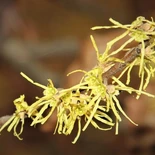
Witch Hazel(Hamamelis virginiana)
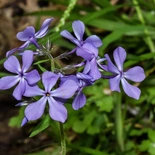
Woodland Phlox(Phlox divaricata)
ABOUT THE DESIGNERS
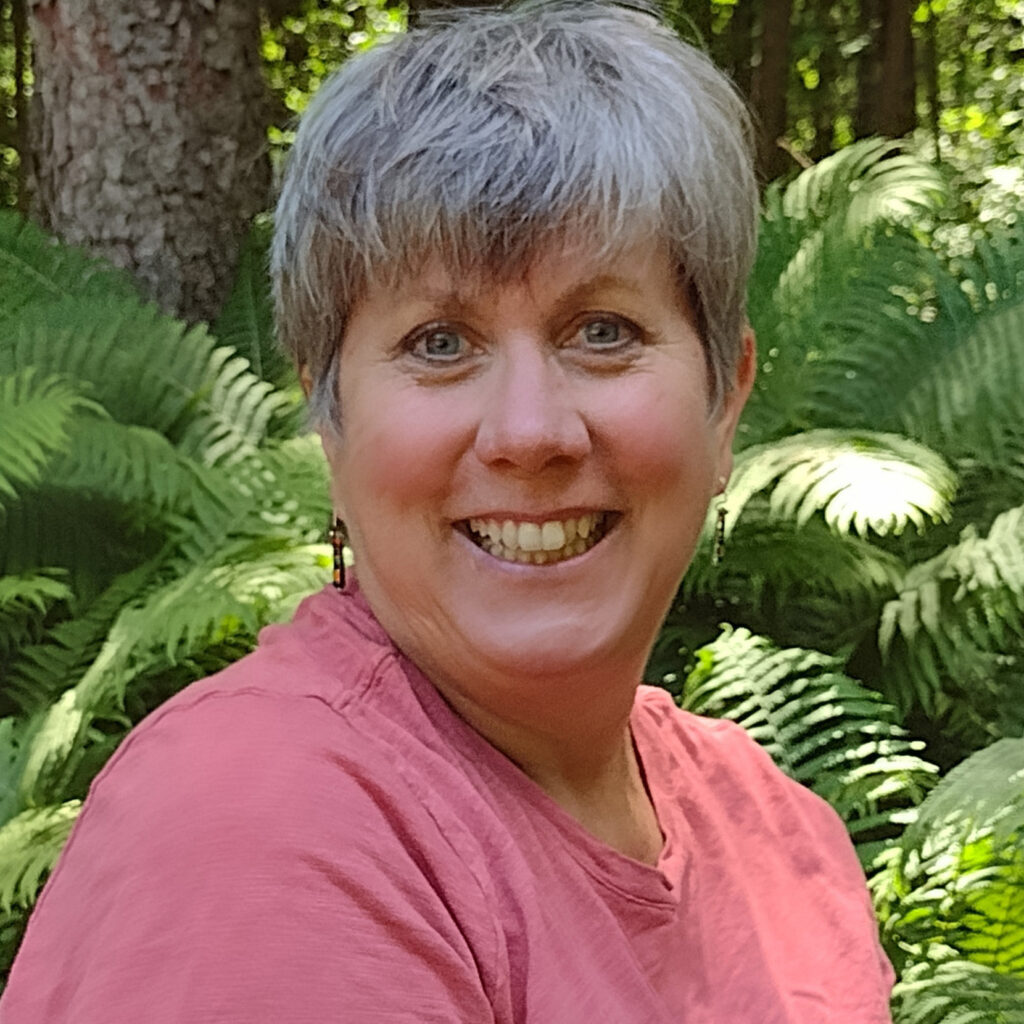
Amy Heilman is a certified landscape designer and has been planning and implementing sustainable gardens for over 20 years, initially in California where water restrictions drive most planned landscapes and currently in her home state of Michigan. Her business, The Living Garden, refers to the ecologic life that can be brought to any garden space with the presence of appropriate native plant species.
Amy has worked in various areas of natural resource management, landscape restoration and native plant nursery operations. She is a frequent educator and speaker. Her goal is to encourage property owners to take an active role in the planning and care of their gardens and to use these spaces to learn about the natural world and the web of life they support.
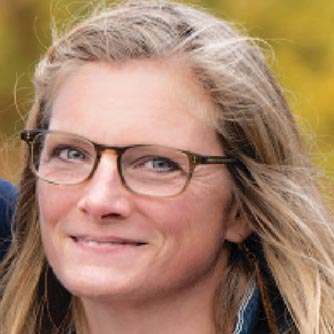
Rebecca Marquardt is a licensed landscape architect with over 25 years experience working with native plants and urban environments and is an accredited professional with the Sustainable Sites Initiative. She is the owner of Revery, a landscape architecture design studio with an ecological restoration influence and core values that hold every site within the built landscape as one that has the potential to protect, improve, and regenerate the ecosystem services that may have been displaced over time.
Rebecca’s leadership focus with Revery is in developing a narrative and design for residential and commercial sites that addresses the important topics of water quality and infiltration, soil health, pollination services, habitat regeneration, climate regulation, while also carefully considering the human experience within these landscapes.
Growing the Native Plant Movement Together
July 22nd at 5:00 PM (CDT)
The closing event of this year’s Less Lawn More Life Challenge, will be led by Lisa Olsen, Chapter Liaison at Wild Ones. In this webinar, you’ll learn how small, personal actions like planting native species and removing invasives, can ripple outward to inspire neighbors, change policies, and reshape communities.
About Wild Ones
Wild Ones (a 501(c)(3) nonprofit organization) is a knowledgeable, hands-on, and supportive community focused on native plants and the ecosystem that depends on them. We provide resources and online learning opportunities with respected experts like Wild Ones Honorary Directors Doug Tallamy, Neil Diboll, and Larry Weaner, publishing an award-winning journal, and awarding Lorrie Otto Seeds for Education Program grants to engage youth in caring for native gardens.
Wild Ones depends on membership dues, donations and gifts from individuals like you to carry out our mission of connecting people and native plants for a healthy planet.
Looking for more native gardening inspiration? Take a peek at what our members are growing!
